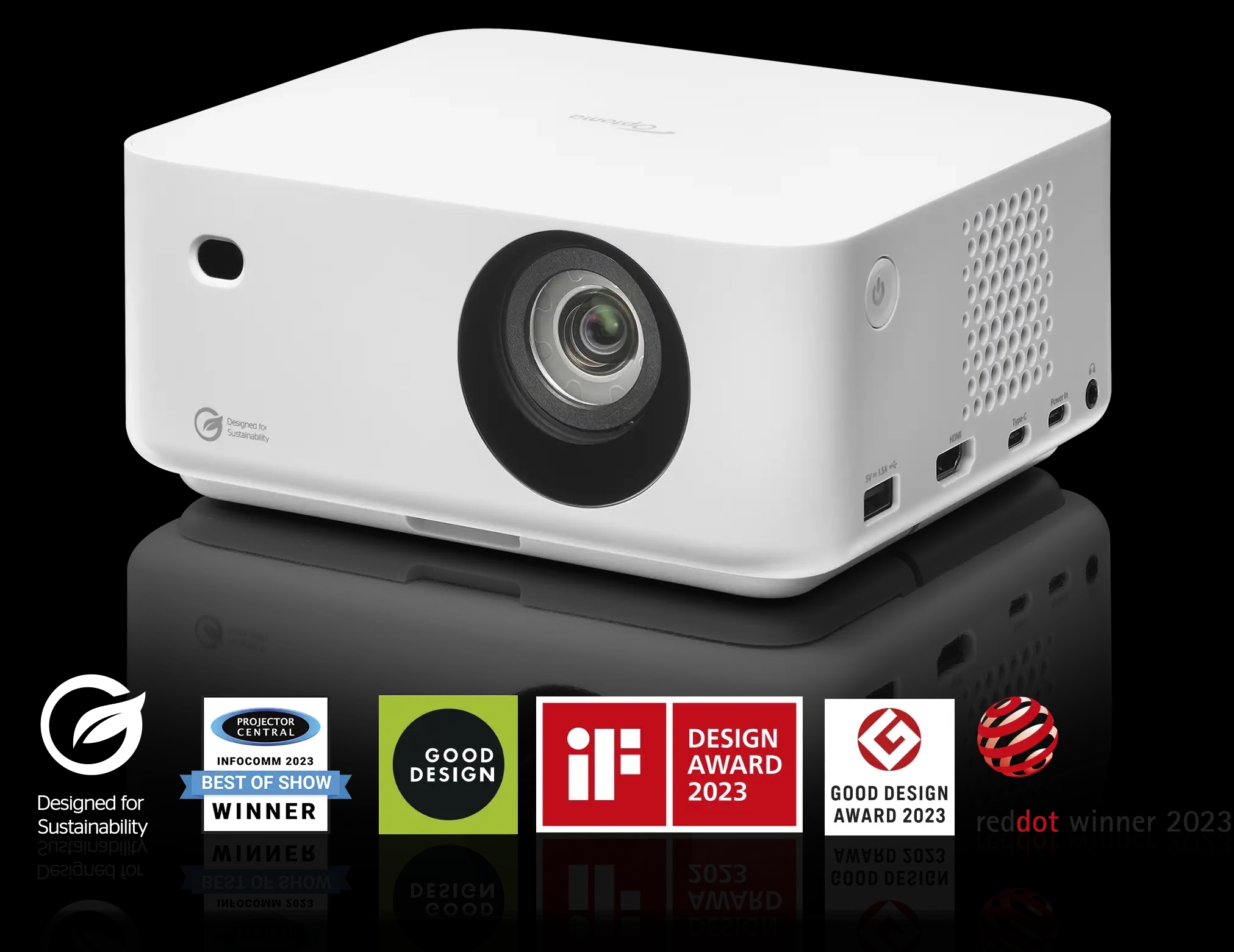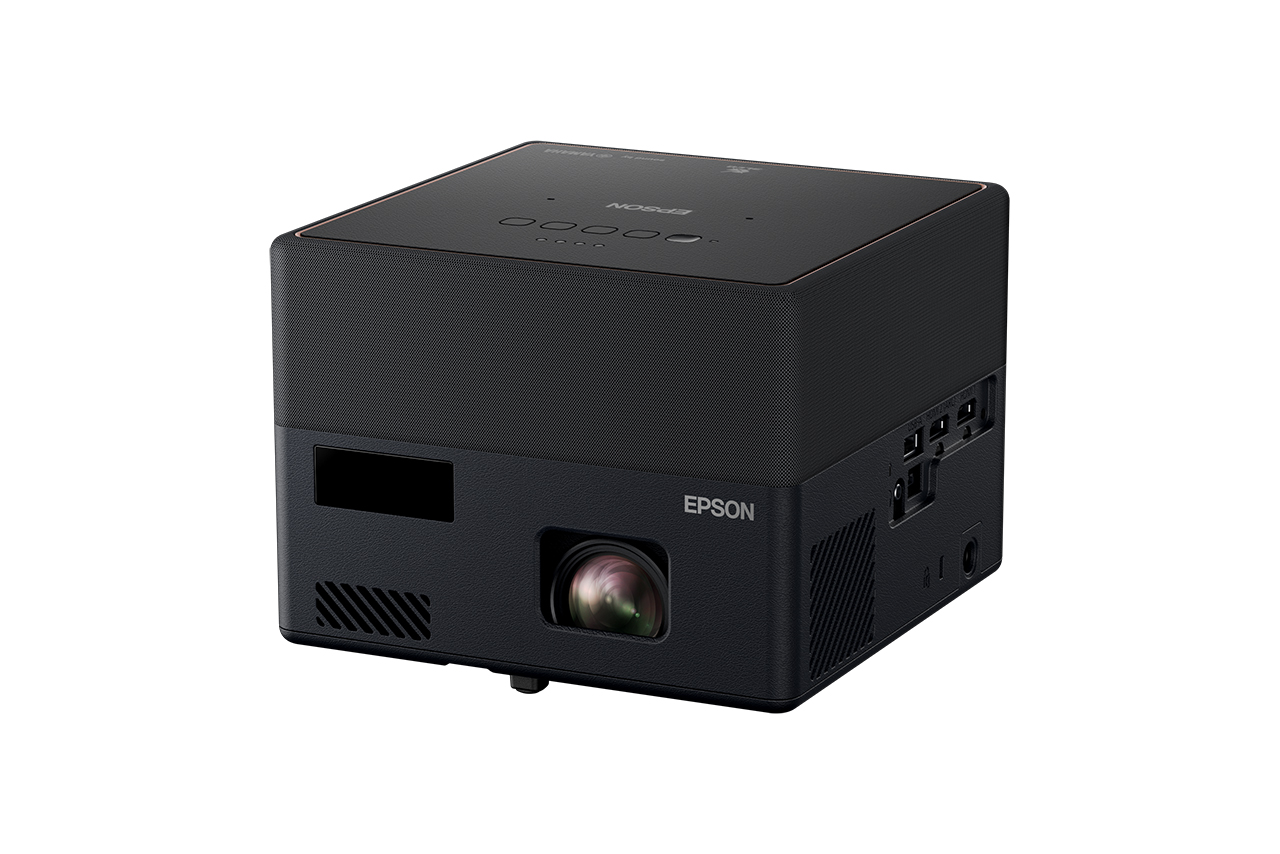Especially in the summer months, many people try to spend the maximum amount of time outdoors, whether in garden gazebos, at a cottage, or camping, tenting, etc. Even then, they do not want to be deprived of multimedia entertainment and sports broadcasts. A smartphone or tablet has a small screen for family or collective viewing, so a suitable projector can be the solution. In the article, we will focus on projectors intended for indoor outdoor spaces and on small portable projectors that you can take with you anywhere.
Image size, resolution and contrast
For projectors that will have a relatively stable location, for example in gazebos, and will project on a large surface, for example on a projection screen, the quality and resolution of the image is an important criterion. Similar to a home cinema, a discerning viewer will also appreciate a projector with a UHD (Ultra-High Definition) resolution, also known as 4K, which has 3840 × 2160 pixels. Projectors with a resolution of full HD 1080p, i.e. 1920 × 1080 pixels, have the optimal quality/price ratio. For less demanding use, for example when camping, a projector with HD 720p resolution is also sufficient. HD resolution will also be a solution to the dilemma between resolution and price if you have a limited budget. Some cheaper pocket projectors have a resolution of 480p.
The diagonal of the image depends on the projection distance and on the focal length and properties of the projector lens. The projection distance depends on the possibilities and arrangement of the space in which it is projected, typically it is 0.7 to 2 m. It is not necessary for the axis of the lens to be perpendicular to the projection screen and directed to its center, because most projectors allow you to correct the keystone distortion optically – by moving the lens vertically relative to the sensor. Cheaper projectors make this correction in software, but such correction reduces the sharpness of the image. Higher quality projectors have an electronic inclinometer and allow for automatic correction of keystone distortion based on the projector’s tilt from the horizontal plane. Zoom projectors allow you to adjust the size of the image without having to change the distance between the projector and the screen. Important criteria are luminous flux, which is given in lumens, and contrast. Contrast is the ratio of light and dark in an image. The brilliance of the image depends on the contrast, while the ambient light falling on the projection surface reduces the contrast.
Unlike projecting in a room outside, you have less or no control over the ambient light. You can’t close the curtains or turn off the light on the neighbor’s patio. So you need enough brightness to overcome the influence of ambient light. Estimate the size of the projected image and the distance at which the projector will be placed according to the most commonly anticipated way of use. The required light output subsequently depends on the size of the image. Projectors using RGB LED lamps are best suited for outdoor use. Their service life is typically 30,000 hours, so they will last for the entire expected life of the projector.
Small portable projectors
Due to its compactness, the designation pocket projector was also used for this category. Support for wireless image transmission and a built-in battery significantly contribute to their mobility. Of course, due to the dimensions, it was necessary to accept certain compromises regarding brightness and related image size, resolution, contrast, etc. The projection system has a relatively large power consumption, so with battery-powered projectors, the brightness had to be adjusted so that the projector could last at least two to three hours on one battery charge. To illustrate, a small portable projector with a brightness of 100 lumens makes it possible to achieve an acceptable image with a diagonal of 60 inches, i.e. 152 cm, in the evening in a partially lit room.
Connectivity and control
Modern projectors most often have an HDMI or USB-C connector with image transfer support. If you have a 4K model, the choice of cable is also important. The 1.4 standard supports 4K at a maximum frame rate of 30 Hz. The frequency of 60 Hz is supported by the 2.0 standard, and the best choice is the cables of the 2.0a/B standard, which in addition to 60 Hz also support HDR. A MHL (Mobile High-Definition Link) wireless mobile multimedia interface is also usually available for direct connection to a smartphone, tablet or computer, or you can stream the image over Wi-Fi using Miracast technology. Typical equipment also includes a USB connector and, in some models, a slot for a memory card, so you can also project multimedia from a USB stick or memory card.
Most models have a remote control that not only allows you to operate the projector, but also has a laser pointer. Some parameters can be set using the remote control, others, such as zoom or focus, are set manually using the controls on the projector, with the exception of more expensive models.
Sound
In most cases, the built-in speaker and, in the case of larger projectors, stereo speakers can be considered an emergency solution. To sound larger spaces, you need to use external speakers, connected either by cable or wirelessly via bluetooth.
Resilience
Since you plan to use the projector outdoors in an environment that is difficult to control, you need one that is dust-proof. We assume that you will always use the projector under a roof, but rain and wind are often unpredictable, so you need to protect the projector from the elements.
Opening picture source: SHUTTERSTOCK.com
Optoma ML1080
The ultra-compact laser projector weighs only 1 kg and offers sharp colors, high brightness and flexible settings for the home, professional environment or travel. With RGB triple laser light technology and full HD 1080p resolution, it provides 1200 lumens brightness and cinema-like colors. Thanks to Time-of-Flight (ToF) technology, it automatically corrects geometry and focus. The USB-C power port enables operation from an external battery. The lifetime of the light source is up to 30,000 hours.

CENA: 959 €
More information: www.optomaeurope.com
EPSON EF12
Compact laser mini projector equipped with top functions including Android TV or Chromecast. The projected image can have a diagonal of up to 150 inches. 3LCD technology guarantees a brilliant image that is up to three times brighter than comparable single-chip DLP projectors. 2,500,000:1 contrast shows shadow detail and deep blacks. The long-life laser light source allows you to enjoy home entertainment for up to 10 years without maintenance. You can enjoy Yamaha’s 3D surround sound with or without a picture by simply turning it off. Just connect via bluetooth and use the device as a separate speaker.

CENA: 1009 €
Anker Nebula Capsule 3
This projector is capable of projecting an image with an aspect ratio of 16:9, which makes it suitable for projecting movies or videos. The Anker Nebula Capsule 3 can be classified as a normal-throw projector, as it can project with a minimum distance of 1.06 m. You can use this model if you are not limited by space when placing the projector. The native resolution is 1920 × 1080. This resolution guarantees you a high-quality experience full of details. Projection is carried out using DLP technology. The projector uses LEDs as a source, so it is small and has lower consumption. The minimum diagonal of the image corresponds to a value of 101.6 cm, the maximum then takes on a value of 304.8 cm. The projector can be placed on a table or on the floor. Thanks to its weight of 0.85 kg, it belongs to the category of miniature projectors.

CENA: 515 EUR
Source: www.nextech.sk


